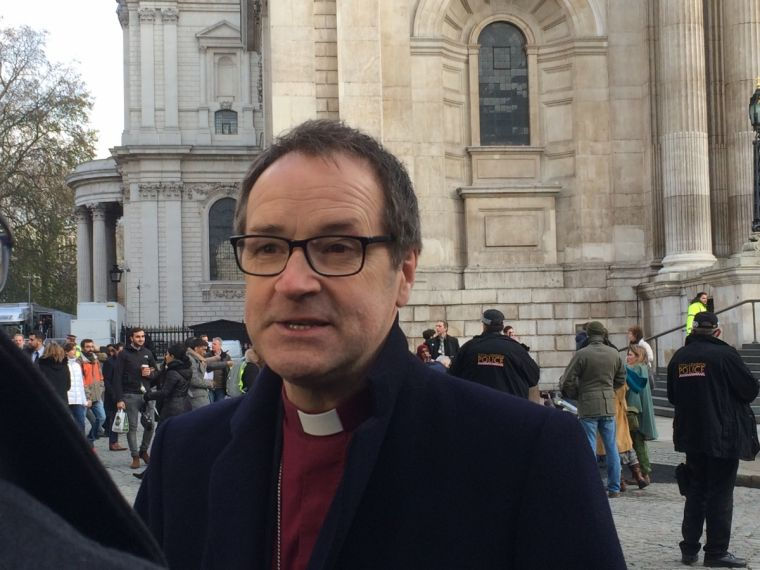Churches in Crises - a National Necessity?
- megwarner
- May 16, 2018
- 4 min read

This blog was first published by Via Media on 11 May 2018, and picked up by Christian Today on the same day.
Here in the UK we are currently marking a string of disturbing first anniversaries. The anniversary of the Westminster Bridge attack was 22 March, and the anniversaries of the Manchester Arena bombing (22 May), London Bridge Attack (3 June), Grenfell Tower fire (14 June) and Finsbury Park Mosque attack (19 June) are fast approaching. The cavalcade of disasters in the Spring and Summer of 2017 shocked and appalled us, even if we were fortunate enough not to have had friends or family numbered among the dead or injured. There is little doubt that the first anniversaries, as we reach them, will be similarly affecting.
For the nation’s churches, the experience was a little more complicated. Many congregations, of course, were situated near the disaster sites and lost members or suffered as a result of these events in a whole range of ways. But something very positive for the churches happened over that period also. The nation suddenly discovered that churches were there, and that they had some quite valuable things to offer.
This was nowhere more apparent than in the devastating aftermath of the Grenfell Tower fire. The difference between the responses of the local council and the churches (together with synagogues and mosques) could hardly have been more marked. Those things that residents immediately looked to the secular authorities to provide – places to congregate, cups of tea, food, emergency supplies, venues for meetings and media conferences, collection and distribution points for donations, a caring word or a hug – were provided instead by the churches. Here was a network of buildings with on-site staff, catering facilities and willing armies of volunteers that could be mobilised at a moment’s notice, even in the middle of the night. Black and purple shirts became familiar, prominent, sights on the news reports in the days that followed – immediately recognisable.
That is not to suggest that the experience was different elsewhere. Following each one of these events churches played a significant role – sometimes observable and sometimes behind the scenes – and this was not lost on the secular authorities in each place. Most cities, towns or areas have disaster-response plans that are made by local authorities, together with policing, fire-fighting and other civic and community organisations. In the past churches have been sometimes consulted and sometimes not. That has changed. Religious leaders are now typically central partners in the making of such plans and religious buildings are being marked for key roles. And now when disasters occur, for the first time, clergy are being invited inside disaster cordons, to counsel and support victims and responders.
None of this comes without a cost for the churches involved, of course. A church that finds itself nearby a major disaster of this type, and which opens its doors to it, can expect to be overwhelmed by the demands made upon it, both in the immediate days after the disaster, and in the following months or even years. Especially if few of the victims of the disaster had been members of the church (which was the case for a number of the churches near Grenfell Tower) this can lead to real tensions over time. Congregations can find themselves quite literally knocked-off their ordinary course. One church, for example, was so overwhelmed by unsolicited donations following the Grenfell Tower fire that when its clergy and PCC decided they needed to do some ‘de-cluttering’ in order to make the church available again for the conduct of liturgy they dispatched three articulated-lorries full of donations to storage.
The role of churches following these disasters was not limited to the provision of post-disaster relief and care. Churches and clergy have also played important civic roles in marking, mourning and moving back to normality. Clergy from Southwark Cathedral, for example, following the London Bridge attack (in which it had itself been significantly affected) held an informal liturgy among the stalls of Borough Market, sprinkling holy water, saying prayers, and ‘re-claiming’ the area for local people, attracting enthusiastic participation on the part of those who happened to be there. Subsequently, local authorities asked the Dean to lead an observance to ease the dismantling of the impromptu memorial to the victims of the attacks – huge piles of flowers, teddy-bears and written messages – that had become, over time, a public hazard. An unplanned, and extremely moving, ritual ensued in which members of the gathered crowd moved forward one-by-one, unbidden, to carry individual items from the memorial into the trucks that that would take them away for burning. A similar ‘re-claiming’ ritual was welcomed in recent days by the people of Salisbury, following the Skripal poisoning, and although it is still very early days, it can probably already be said that the national service commemorating the six-month anniversary of the Grenfell Tower fire, held at St Paul’s Cathedral, will be looked back to as a very significant point in the community’s recovery from that tragedy.
I didn’t grow up in this country. I’m Australian and have spent most of my life in a country that doesn’t have an established church. Perhaps that makes me especially sensitive to what I see as the rich gifts that establishment brings, both to church and to nation. In the churches’ response to these terrible events one year ago I think that the public began to develop a renewed awareness of exactly what the Church of England offers to the nation – both nationally and parish by parish.
I hope and pray that the Church of England is also being led to a renewed awareness – an awareness of what it can be and who it is for.




Comments